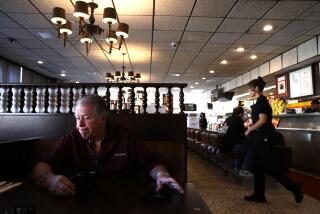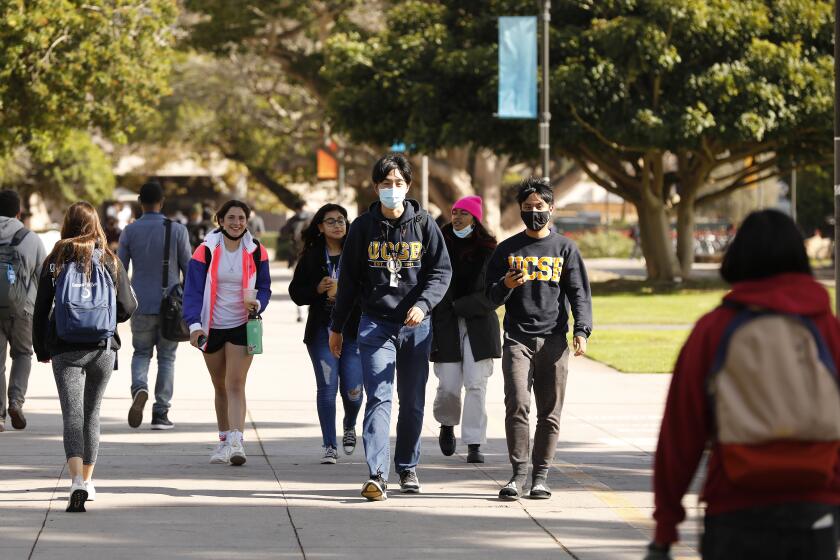O.C. Fair and State Will Part Ways
The Orange County Fair should be able to make a rapid transition away from its state ownership to either private or local government control, California Secretary of Food and Agriculture Ann M. Veneman said Thursday.
The 104-year-old fair, which has operated on the same 160-acre Costa Mesa site since 1949, is one of two California county fairs that will leave the state’s jurisdiction as part of a pilot program announced this week.
“I think we can jump right into this,” Veneman said during a tour of the fairgrounds.
“These fairs are well-positioned and self-supporting,” Veneman said. “They have already done a lot of innovative things.”
Veneman said the fair’s nine directors will decide if the fair should be privatized as a nonprofit organization or placed under the jurisdiction of the county or city of Costa Mesa. Board members are all unpaid government appointees.
Costa Mesa Mayor Joe Erickson proposed Thursday that the City Council form a joint venture with the fair board that would give the city a voice in the decision-making process. The mayor praised the board but noted that there are no Costa Mesa residents among its members.
“We are very pleased with the current board, but I think some sort of joint use with the city would create efficiencies and allow the city to make sure our residents are not negatively impacted by the fair’s operation,” Erickson said. “The right level of accountability is difficult to get if there isn’t someone on the board from the city the fair is located in.”
The Orange County Fair organization, one of the most successful in the state, generates $11.7 million annually. The fairground operation includes the Pacific Amphitheatre, farm exhibits and motorcycle racing, but its two largest income events are the 17-day Orange County Fair in the summer and the swap meets held each weekend, officials said.
The summer fair and swap meets each generate about 40% of the organization’s annual revenue, officials said. The fair operates without any subsidy from the state, except for use of state land and buildings, and does not accept the $30,000 in taxpayer funds available, fair officials said.
Fair officials say the effect on the public of any new organizational changes will be minimal, but some vendors at the weekly swap meets have expressed concerns.
Gene Bounds of Costa Mesa, a vendor at the fair for 18 years, said the swap meets have already grown too large and crowded to best serve the 1,400 sellers and their customers. He predicted that conditions will continue to deteriorate.
“I can’t imagine how this will help the vendors,” Bounds said. “At the moment there are some state rules and laws that have protected us. If the place is privatized, I assume those would go away.”
Becky Bailey-Findley, the fair’s general manager, said the swap meet operates under a five-year contract and that will not change if the fair becomes independent of the state.
Along with the Orange County Fair, the Napa Town and Country Fair in Napa also will leave the state’s jurisdiction, it was announced Thursday.
Veneman said the push to move the fairs to independence comes from Gov. Pete Wilson’s plan, announced last month, to reform and streamline state government. The move would not only free the fairs from state bureaucracy but would potentially eliminate hundreds of gubernatorial appointments, Wilson said in a statement to the press Thursday.
Fair board member Buck Johns said the move to independence typifies a national shift toward more local control.
“The whole trend of government today is downsizing and privatization,” Johns said. “There are a lot of restraints and restrictions that come from Sacramento. If we can get away from those things, it can be a positive.”
More to Read
Sign up for Essential California
The most important California stories and recommendations in your inbox every morning.
You may occasionally receive promotional content from the Los Angeles Times.





